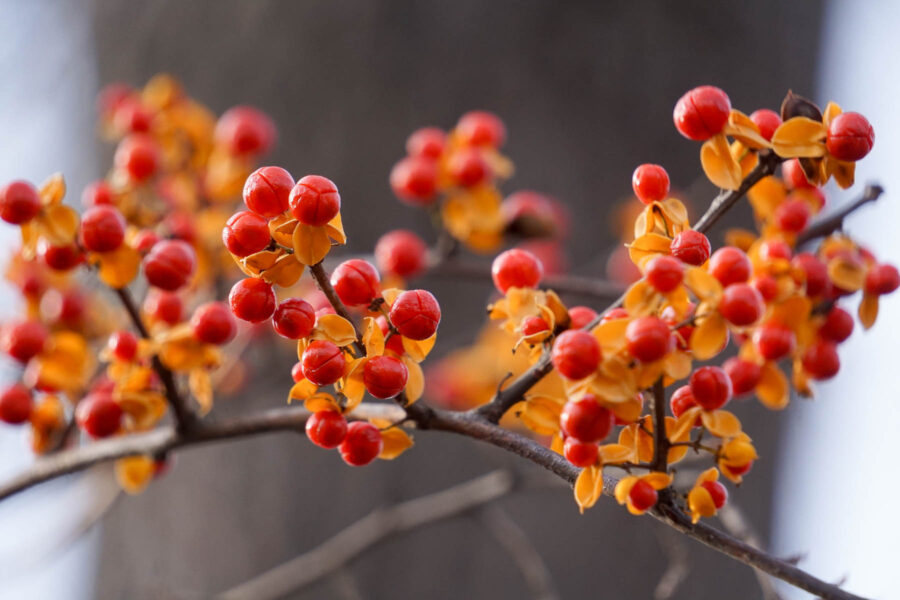Don’t deck the halls with invasive species
Holiday decorations can unintentionally increase the spread of invasive species

Each fall, the weather cools and the landscape starts to change. Brilliant fall foliage fades into dull winter colors except for a few species that stand out. The plants that maintain their leaves and berries become prime targets for holiday decorations. Some of these species are native, but some are invasive species that are harming local ecosystems. Knowing the difference between the two can help residents stop the spread of invasive species.
Oriental bittersweet, multiflora rose, porcelain berry and nandina are invasive species that are commonly used in decorations and landscaping during the winter months because of their winter color. When these species are harvested and used for flower arrangements, wreaths or other decorations, the berries can drop and spread to new areas that were formerly free of invasive species. And if they are disposed of outdoors, the stems can also root and create new plants.
Invasive species were introduced without knowledge of their harmful impacts. They were brought to North America for both aesthetic reasons and practical reasons such as erosion control. Once introduced, they began to spread throughout the region and wreak havoc on the local ecosystem. Globally, invasive species have hampered agriculture, decreased property values and required management efforts to the tune of $1.28 trillion over the past 50 years.
Invasive species have few natural predators or competitors to keep the population under control. They grow faster than many native plants, shading them out. Some, like Oriental bittersweet, are vines that will girdle trees and shrubs. In only a few years invasives can take over entire ecosystems, and now climate change might make it easier for them to spread.
As an alternative to invasives, there are an abundance of native plants that look beautiful in winter. Visit a local nursery with native species if you’re interested in landscaping with native plants that maintain color in winter. If you’re looking for decorations, ask your florist questions about the plants and where they came from. Only use sustainably grown and harvested native or noninvasive species for outdoor decorations. Winterberry is an excellent native alternative for decorating with the bright red fruits that Oriental bittersweet and nandina are known for. Other species to consider include American holly, eastern redcedar, pine, fir, spruce, birch, dogwood and magnolia. If you’re looking for even more color, consider using dried flowers that can be composted after you’re done using them. If you do buy decorations with invasive species, make sure you dispose of them in the trash and not in your backyard or compost.
If you have any invasive species in your yard or garden, consider removing them and planting native plants in their place. This will help to create a healthy ecosystem that benefits local wildlife and provides seasonal beauty on your property.
Interested in doing more to help reduce the prevalence of invasive species? Consider joining your local Weed Warriors group to remove invasive species from the local landscape.

Comments
The people who monitor the health of the Bay need to have a major paradigm shift away from the 1983 plan and it's subsequent renditions. Doing the same thing over and over again and expecting a different outcome is wasting valuable time. We don't need another modification, we need a completely new plan that not only seeks to improve the Bay, but also includes forward looking plans for sea level rise mitigation.
Thank you!
Your comment has been received. Before it can be published, the comment will be reviewed by our team to ensure it adheres with our rules of engagement.
Back to recent stories